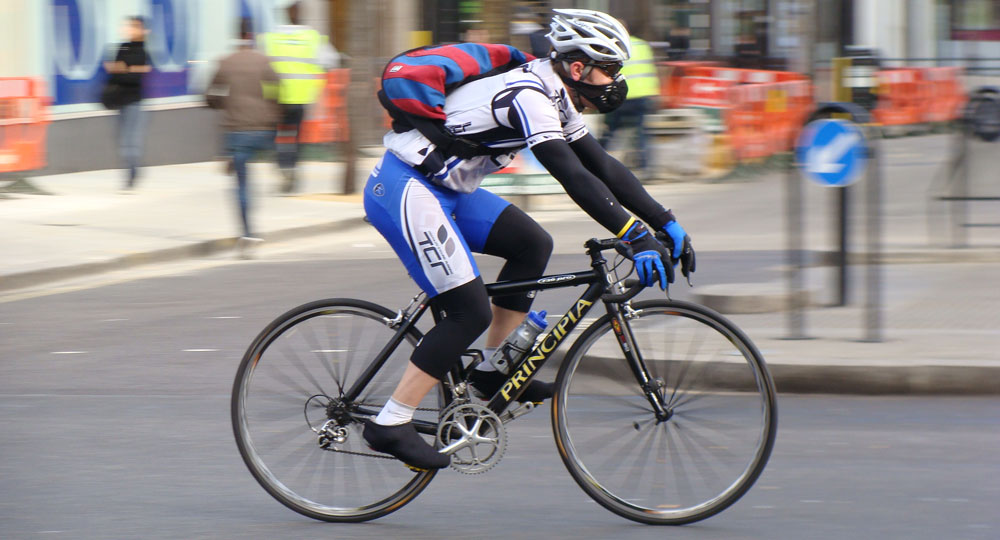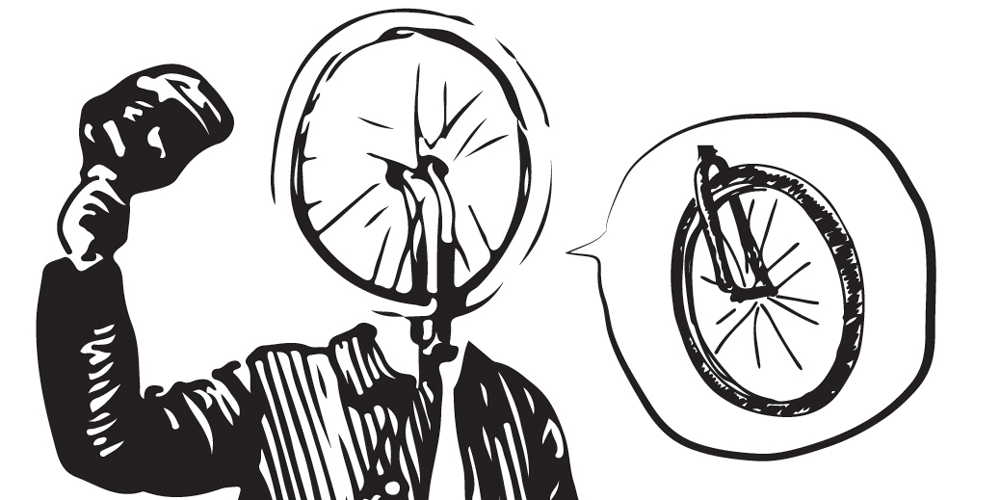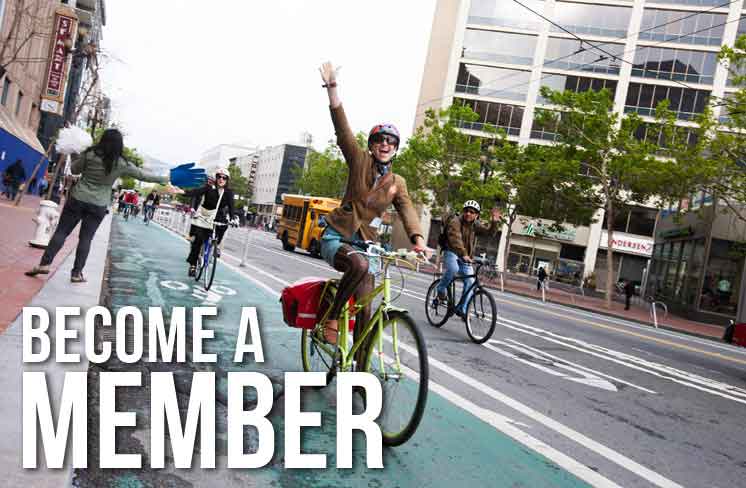Wheel Talk for Wheel People is a monthly advice column written by Christopher White, our adult education program coordinator. Though bikes, biking and getting around SF are our areas of expertise, feel free to ask anything! To submit your questions, please click here.
Wheel Talk, I worry sometimes about negative health effects of breathing so much motor exhaust while I’m riding around SF. You almost never see bikers wearing masks in the USA, but you do see them all over Asia. Do you have an opinion about the wearing of masks, and is there a mask brand that you recommend? Or, do you think putting a bandana around one’s nose and mouth provides enough filtration? I have seen that on a few bike messengers. —Breath of Fire

Does wearing a face mask when biking protect your lungs?
Dear Breath of Fire: This is a pertinent question, given all the fires we experience near our city. As a year-round practice, I don’t think that it’s all that important to wear a face mask while riding in SF — outside of fire season, our air quality is generally pretty good (and much better than many Asian cities where masks predominate and diesel engines propel most vehicles). The one exception I’d make is if your ride or commute is on a route with a lot of motor vehicle traffic (along our highways, for example). Sucking on all that car exhaust is surely unhealthy, especially when you’re breathing hard.
However, during fire season, when smoky particulate matter makes our air quality much worse, it’s probably a good idea to wear a mask when riding. Before leaving the house, I’d check an air quality website like this one to see what the forecast is. If it’s anything other than the green “good” zone, think about wearing a mask when riding. Be sure that you buy a mask that is rated at N95 or higher (meaning it filters out 95% of particulate matter). It should fit snugly all around your mouth and nose; the California Department of Public Health (DPH) recommends masks with two straps that go around the head, above and below the ears (not straps that hook around the ears). Disposable masks are commonly available, but I recommend a sturdy reusable one. Many are available online, and a few review articles float around the web as well.
To your final question, according to the CA DPH, a bandana around the mouth — even a wet one, like I’ve seen used in movies — is ineffective at blocking out small particulate matter. Use a mask, or else consider staying indoors or taking public transportation.
Wheel Talk, I was curious if you can clarify the rules for adults regarding helmets when operating an electric bike? I know that there are three different classes of e-bike, and I’ve heard they have different helmet rules. Also, are all classes of electric bikes still considered bikes or are they classified as something else now? —Class-E-Bike
Dear Class-E-Bike: Seems rather byzantine, doesn’t it, to have so many classes of e-bike? Here are the differences: Class 1 electric bikes are low-speed pedal-assisted bikes, in which the motor automatically assists while pedaling and cuts out when a top speed of 20 mph is reached. Class 2 are low-speed throttle-assisted bikes; they still have a top speed of 20 mph, but the person riding doesn’t need to pedal for the motor to work. Class 3 bikes are “speed pedal-assisted,” meaning they again require pedaling for the motor to work, but they can reach top speeds of 28 mph and must have a speedometer.
In the eyes of California law, Classes 1 and 2 remain governed by the same laws as unelectrified bikes. For instance, they are allowed in all bike lanes and bike paths, and, to your question, riders are not required to wear helmets (though we certainly recommend them!). Jump Bikes’ stationless shared bikes, for instance, are Class 1. When riding them, you can feel the motor cut out at a certain point, which tells you you’ve reached the maximum of 20 mph. Therefore, those red bikes are allowed in bike lanes and the people speeding along on them may do so without their heads protected (but did I mention we strongly recommend that you protect yours?).
When riding a Class 3, on the other hand, California law requires a helmet. They also are prohibited from bike paths or bikeways, unless they’re within or adjacent to a roadway — which means that they can be on regular bike lanes (painted or protected), but not on shared-use paths (like those leading up to the Golden Gate Bridge). Still, these bikes are much faster than “acoustic” bicycles, so if you’re riding one, be thoughtful and considerate of your fellow folks on bikes!


